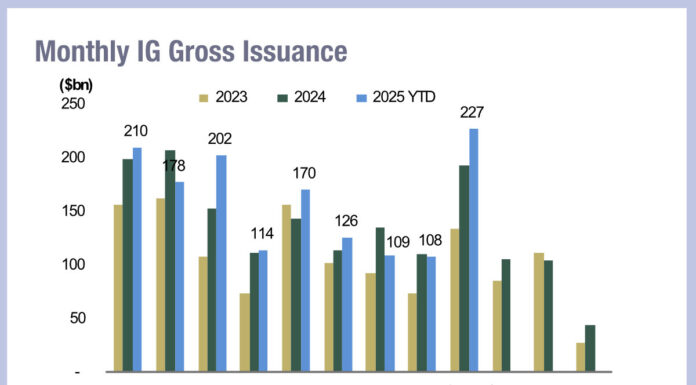Kate Finlayson, Managing Director, FICC Market Structure & Liquidity Strategy at J.P. Morgan, examines key market structure developments shaping trading behaviour as the global focus pivots to national competition.
In today’s rapidly evolving markets, trading strategies must reflect the interplay of macroeconomic trends, technological innovation, and policy initiatives. As the global landscape shifts toward national competitiveness, it is increasingly important for trading desks to reassess their approach to market structure and adapt to new regulatory frameworks across jurisdictions.
Policy divergence has long been a feature of the global trading landscape, but the stronger focus on market competitiveness has been reinforced over the last few months. Notably, the United States’ shifting stance on trade, a pivot in the approach to rule-making and senior leadership changes at top U.S. agencies have further influenced policy direction.
Across the pond, while there is broad alignment on regulatory objectives in the EU and U.K., both are pursuing their own path. In the post-Brexit context, Europe is advancing initiatives such as the Capital Markets Union and Savings and Investments Union to encourage investment and trading within the EU. Equally, the U.K. is looking to drive innovation and growth, fine-tuning its regulatory frameworks to achieve these objectives.
For trading desks, the central question is how best to adapt and optimize execution in this shifting environment.
New Sources of Data, Ongoing Inconsistencies
Direct market impacts are already apparent. In the next year or so, two bond consolidated tapes will emerge – one in the U.K. and one in the EU – each subject to distinct disclosure regimes. The transparency framework ultimately defines the input and output fields for post-trade data. Based on trade size and liquidity determination, certain trades will be printed in the EU more quickly than the U.K. For example, a €7.49 million investment-grade corporate bond trade (with an issuance size equal to or greater than €0.5 billion) would be reported in the EU within 15 minutes, while only reported in the U.K. after two weeks.
These differences create varying degrees of information leakage, which in turn affects how liquidity providers price subsequent trades. Heads of trading may be evaluating whether to execute larger trades to benefit from deferred publication, or to break trades into smaller sizes to minimize market impact – each approach having its own transaction cost considerations. Additionally, consuming data from multiple sources under different regimes presents further operational challenges.
Tidal Shifts in EUR Swaps
Under EMIR 3.0, the Active Account Requirement now mandates that EU funds subject to the requirement clear a representative amount of their EUR and PLN-denominated derivatives trades through EU-based central counterparties (CCPs). This also introduces new operational, stress testing, and reporting requirements. Fund managers must assess which portfolio components to move, evaluate liquidity at EU CCPs, and consider the potential loss of netting benefits currently achieved at their incumbent ‘third-country’ CCP.
Concurrently, pension funds in the Netherlands are transitioning from a defined benefit to a defined contribution model, which is expected to steepen the Euro swaps curve. As funds shift from delivering fixed payouts to a pension based on the performance of the investments in the fund, demand for long-dated swaps is likely to decrease, reducing the number of natural buyers and steepening the curve. The transition is being phased in ahead of the January 2028 deadline. However, with only a handful of administrators overseeing this transition, the operational impact is significant and hedging activities during this period will influence trading decisions and market liquidity.
Addressing Hidden Leverage
Global policymakers continue to focus on mitigating hidden leverage in the system. The Financial Stability Board (FSB) has issued recommendations on how to address this leverage, including activity-based measures such as minimum haircuts, and central clearing. The Bank of England is exploring these factors as they relate to the gilt market and in the U.S., the Treasury futures basis trade is in the frame, although it remains to be seen whether any of these recommendations will be implemented. Minimum haircuts could impact the appeal of relative value strategies, prompting trading desks to assess how such haircuts may affect the pricing of bonds in some markets versus others. All of this while the industry prepares for the U.S. SEC requirement to centrally clear certain Treasury cash and repo transactions.
Cost of Capital on Trading
It’s hard to talk about market structure change these days without mentioning developments in bank capital reform. Proposed adjustments to the U.S. Supplementary Leverage Ratio (SLR) aim to ensure that SLR serves as a backstop to risk-based capital requirements. Broader initiatives, such as the G-SIB and Basel III endgame proposals, are expected to have an even greater impact. Other jurisdictions such as the EU and U.K. have responded by postponing certain elements of their Basel III reform to remain competitive. This will be a key area to monitor given the influence of prudential regulation on risk provision and trading activity.
Key Considerations for Trading Desks
Staying informed about these developments is essential. At J.P. Morgan, the global team is dedicated to identifying and evaluating anticipated changes in market structure and supporting clients in assessing the implications for pricing and liquidity, the impact on trading strategies, regulatory priorities, as well as technology development. Engaging proactively with liquidity providers enables trading desks to anticipate market responses and make informed decisions.
©Markets Media Europe 2025














